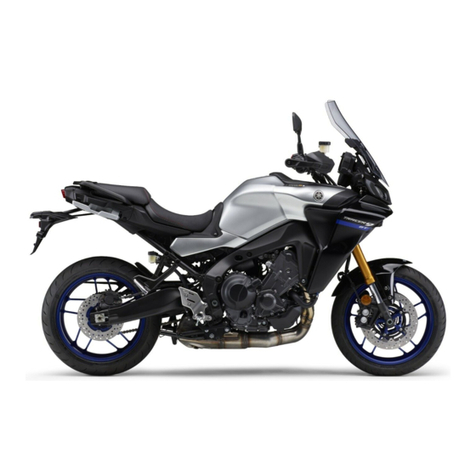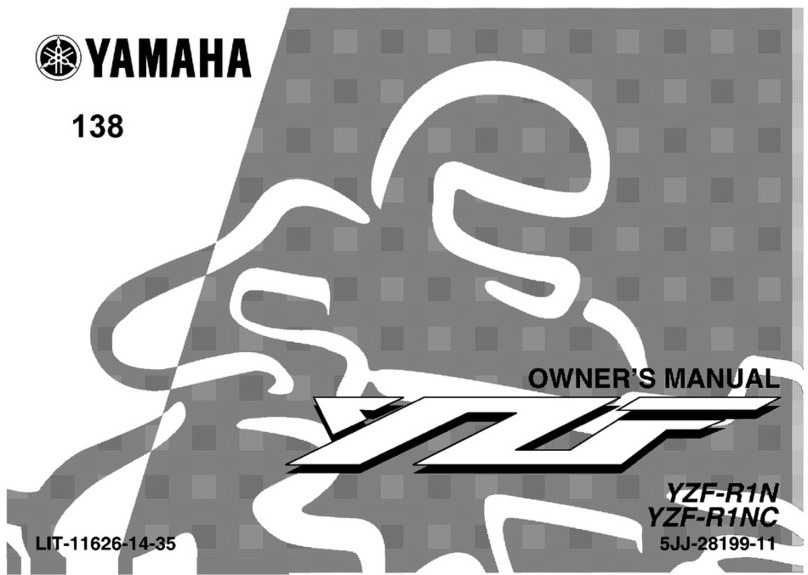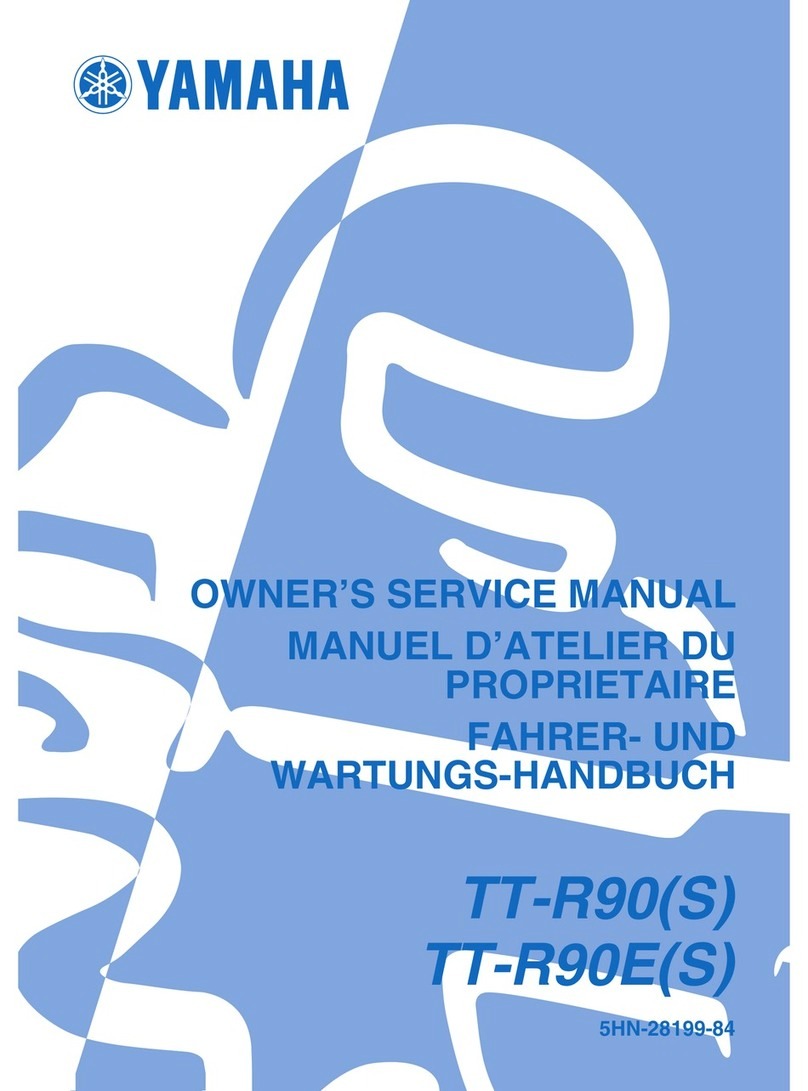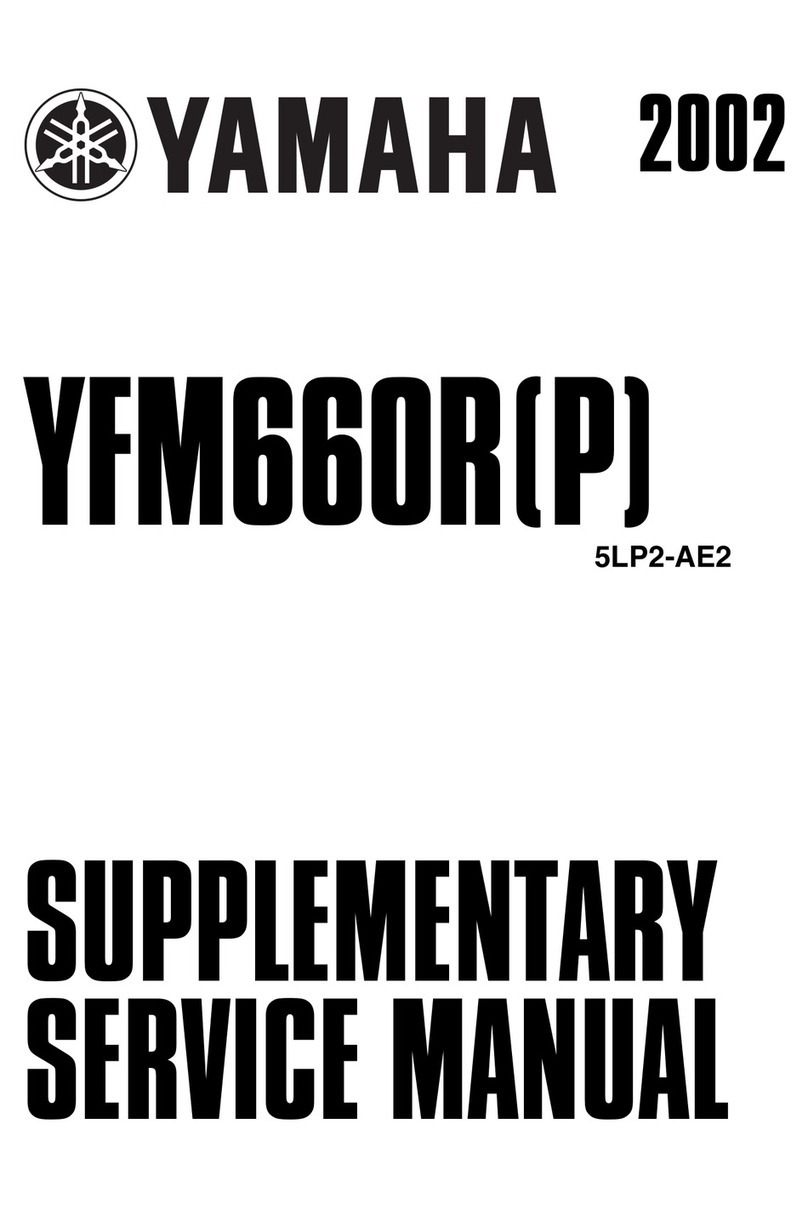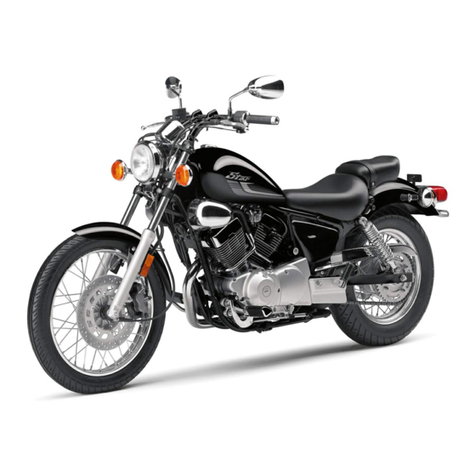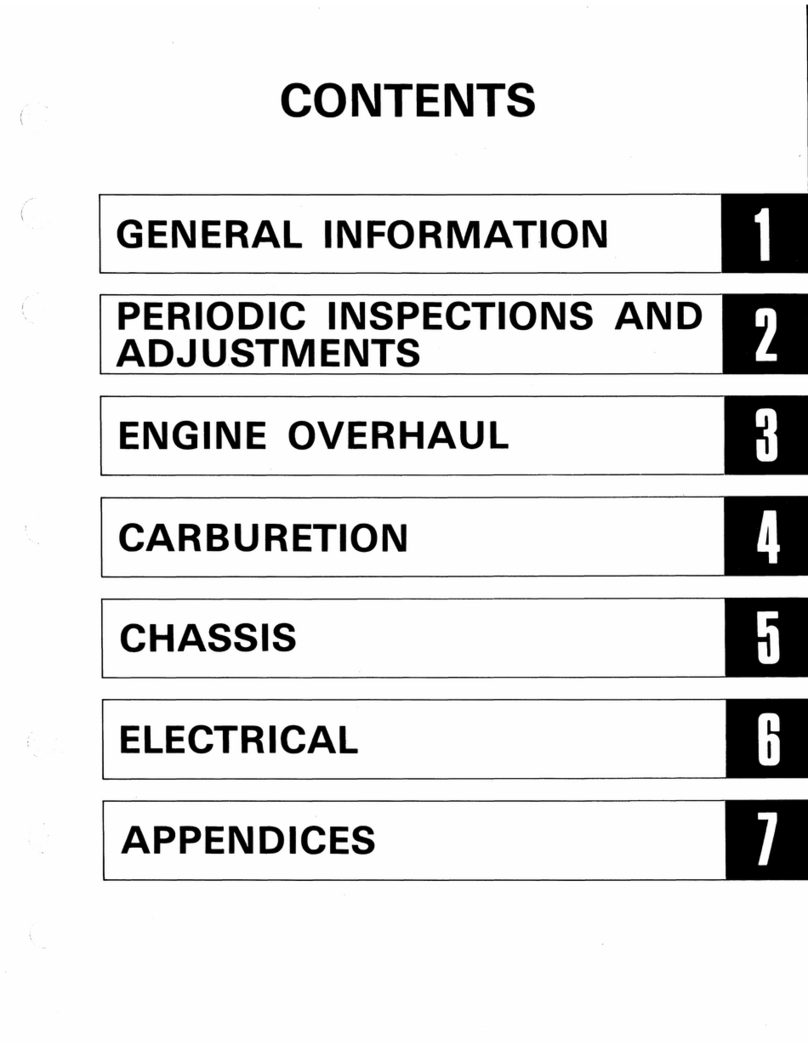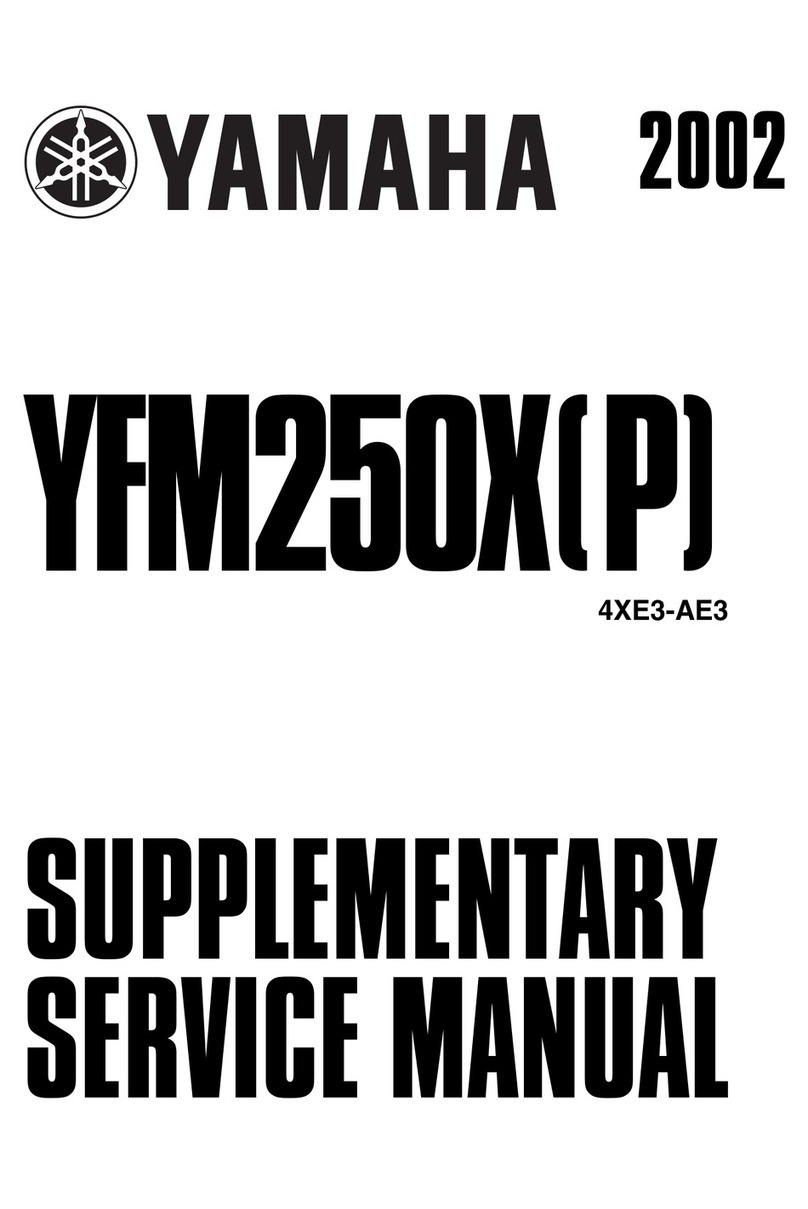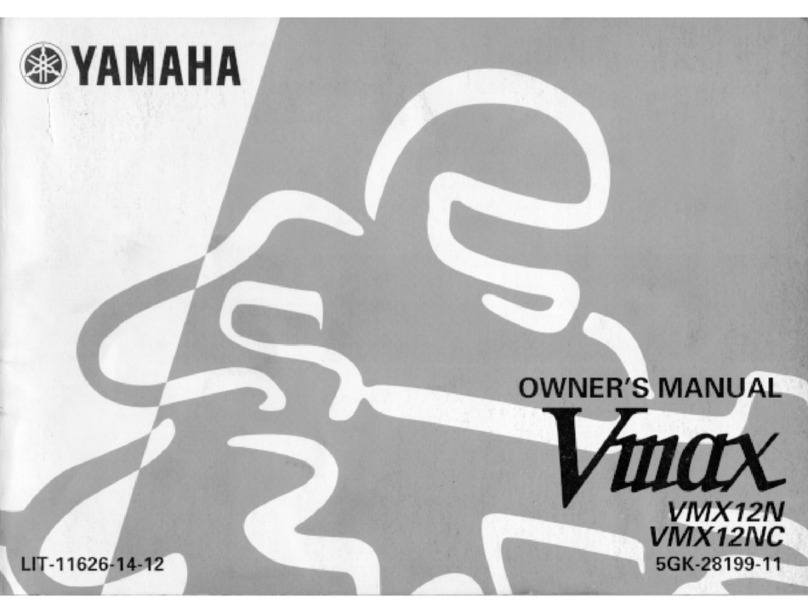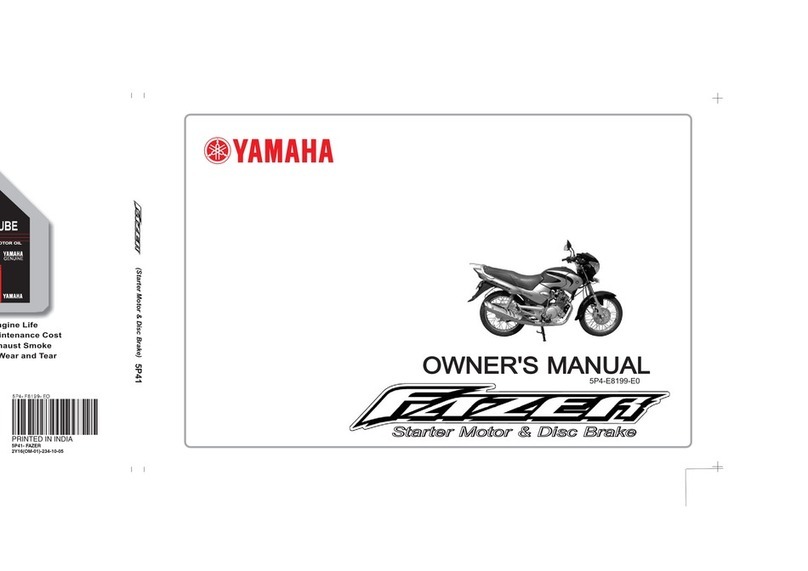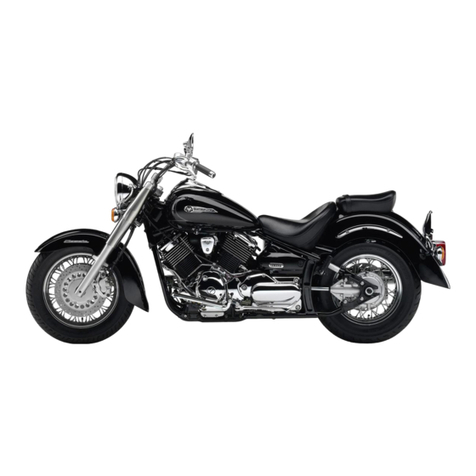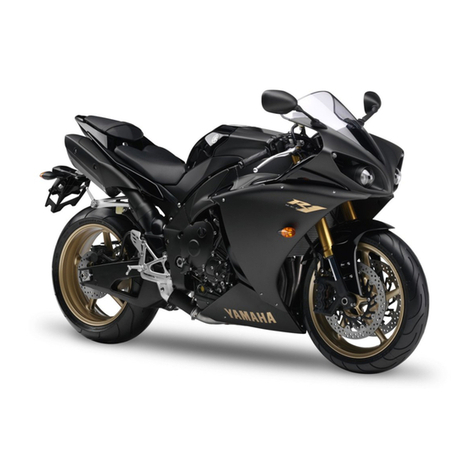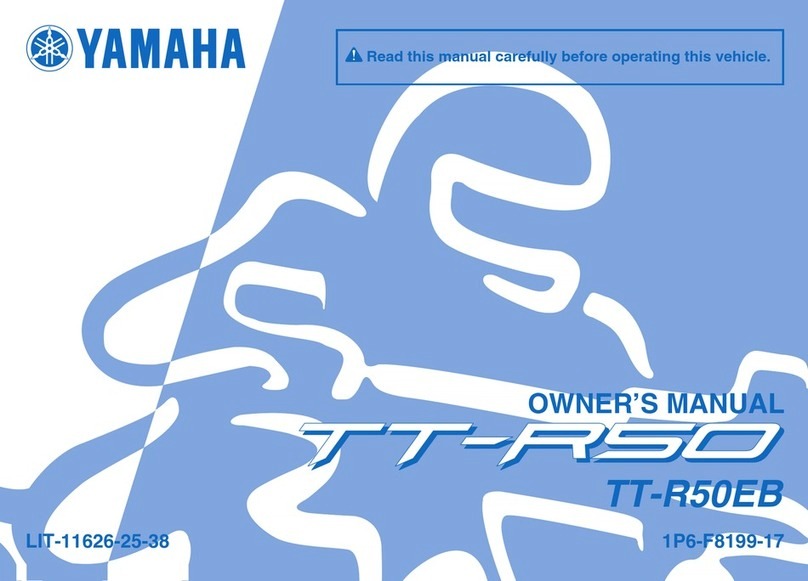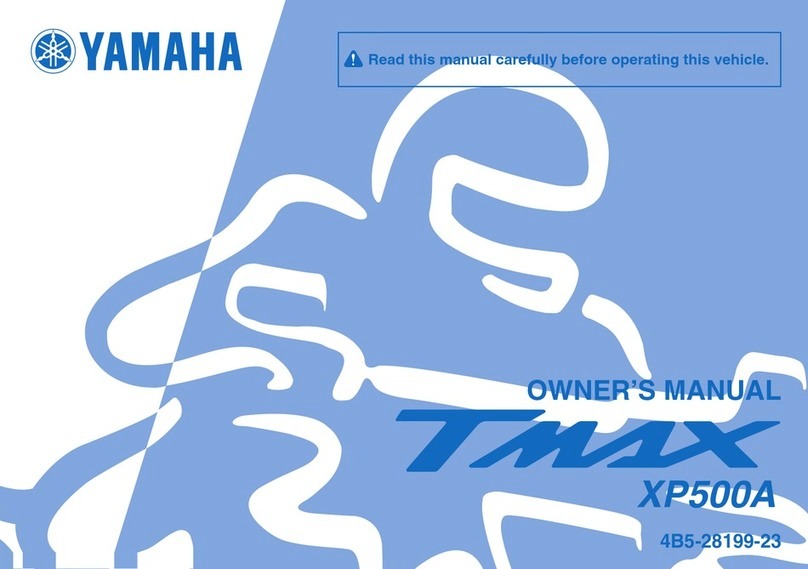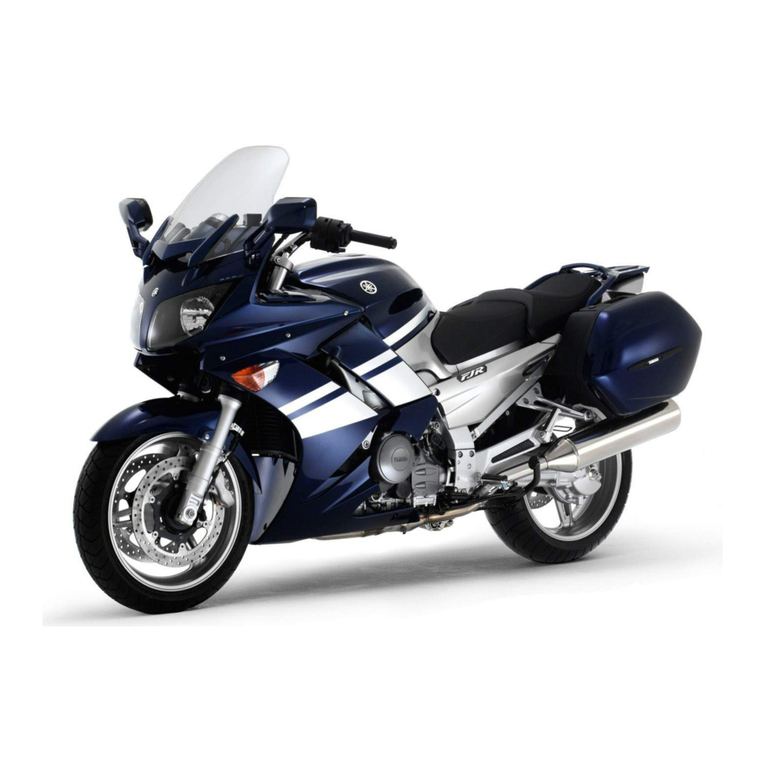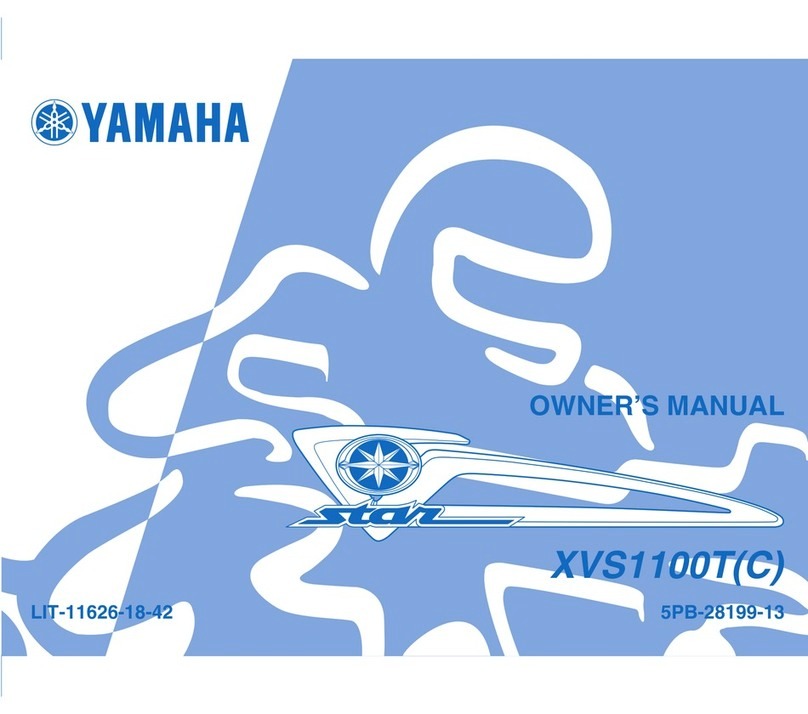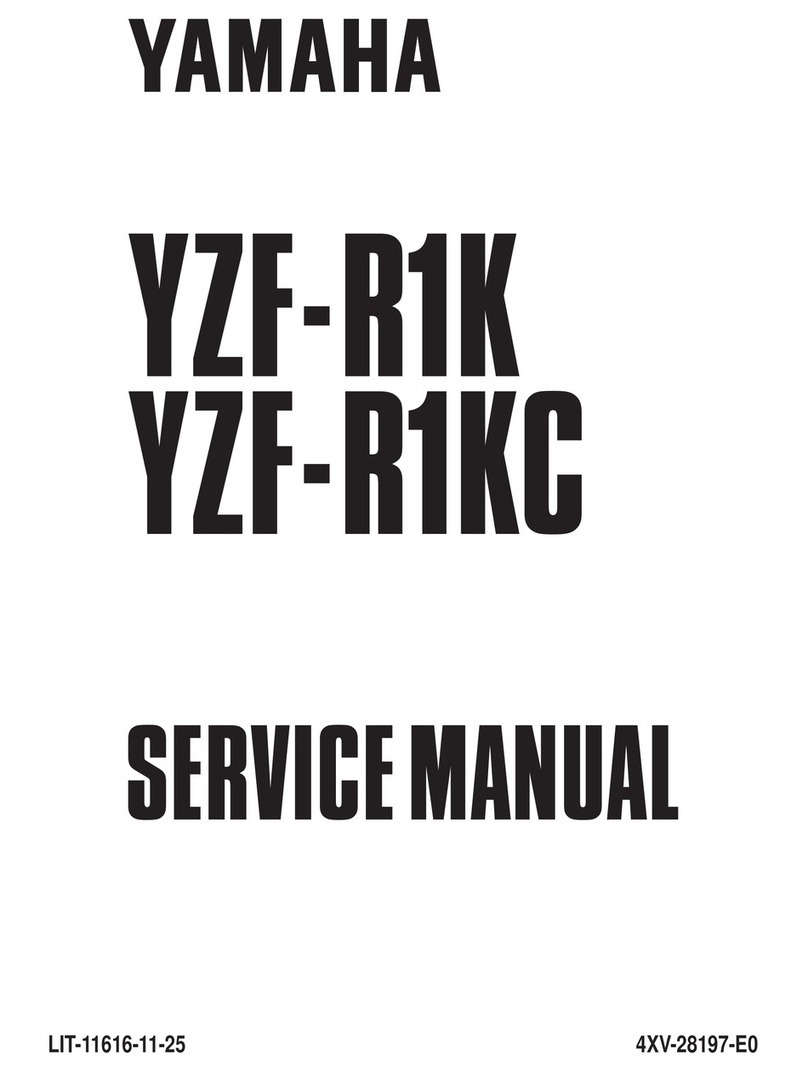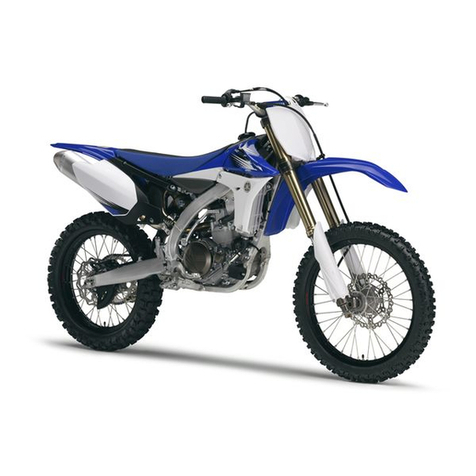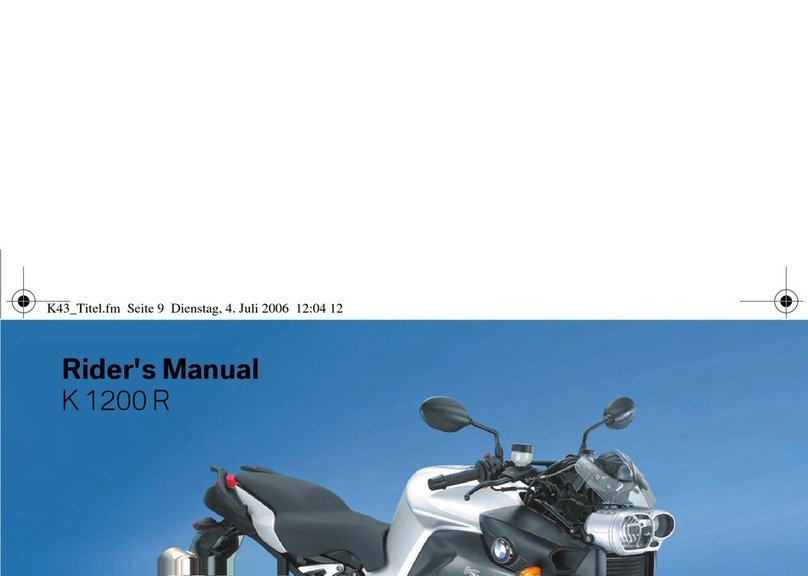
SAFETY INFORMATION
THIS MACHINE IS DESIGNED STRICTLY
FOR COMPETITION USE, ONLY ON A
CLOSED COURSE. It is illegal for this machine
to be operated on any public street, road, or
highway. Off-road use on public lands may also
be illegal. Please check local regulations be-
fore riding.
• THIS MACHINE IS TO BE OPERATED BY
AN EXPERIENCED RIDER ONLY.
Do not attempt to operate this machine at
maximum power until you are totally familiar
with its characteristics.
• THIS MACHINE IS DESIGNED TO BE RID-
DEN BY THE OPERATOR ONLY.
Do not carry passengers on this machine.
• ALWAYS WEAR PROTECTIVE APPAREL.
When operating this machine, always wear an
approved helmet with goggles or a face
shield. Also wear heavy boots, gloves, and
protective clothing. Always wear proper fitting
clothing that will not be caught in any of the
moving parts or controls of the machine.
• ALWAYS MAINTAIN YOUR MACHINE IN
PROPER WORKING ORDER.
For safety and reliability, the machine must be
properly maintained. Always perform the pre-
operation checks indicated in this manual.
Correcting a mechanical problem before you
ride may prevent an accident.
• GASOLINE IS HIGHLY FLAMMABLE.
Always turn off the engine while refueling.
Take care to not spill any gasoline on the en-
gine or exhaust system. Never refuel in the vi-
cinity of an open flame, or while smoking.
• GASOLINE CAN CAUSE INJURY.
If you should swallow some gasoline, inhale
excess gasoline vapors, or allow any gasoline
to get into your eyes, contact a doctor imme-
diately. If any gasoline spills onto your skin or
clothing, immediately wash skin areas with
soap and water, and change your clothes.
• ONLY OPERATE THE MACHINE IN AN
AREA WITH ADEQUATE VENTILATION.
Never start the engine or let it run for any
length of time in an enclosed area. Exhaust
fumes are poisonous. These fumes contain
carbon monoxide, which by itself is odorless
and colorless. Carbon monoxide is a danger-
ous gas which can cause unconsciousness or
can be lethal.
• PARK THE MACHINE CAREFULLY; TURN
OFF THE ENGINE.
Always turn off the engine if you are going to
leave the machine. Do not park the machine
on a slope or soft ground as it may fall over.
• THE ENGINE, EXHAUST PIPE, MUFFLER,
AND OIL TANK WILL BE VERY HOT AFTER
THE ENGINE HAS BEEN RUN.
Be careful not to touch them or to allow any
clothing item to contact them during inspec-
tion or repair.
• PROPERLY SECURE THE MACHINE BE-
FORE TRANSPORTING IT.
When transporting the machine in another ve-
hicle, always be sure it is properly secured
and in an upright position and that the fuel
cock is in the "OFF" position. Otherwise, fuel
may leak out of the carburetor or fuel tank.
